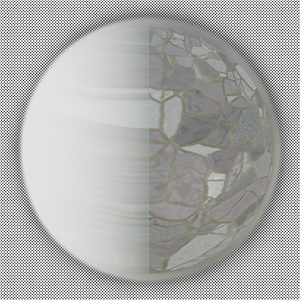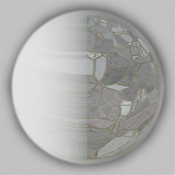Information
- Publication Type: Bachelor Thesis
- Workgroup(s)/Project(s):
- Date: November 2018
- Date (Start): March 2018
- Date (End): 30. November 2018
- Matrikelnummer: 0929245
- First Supervisor:
Abstract
This bachelor thesis can be divided into two sequential parts. The first part examines physically-based shader analyses their functionality. In this context, shader were studied in general, while discussing core elements like the rendering equation and the graphics pipeline. Physically-based shader were subsequently brought to close attention. In this step, the study deals with various real life phenomenons, that occur in reality and were successfully implemented in computer graphics. For this purpose, the BRDF (Bidirectional Reflection Distribution Function) was explained theoretically and analysed mathematically. The second part of this thesis covers the import of FBX files into the game engine Unity3D. The goal of this chapter is to modify the import process to the extend that material information won’t get lost. When importing FBX files into Unity3D, textures have to be assigned to Unity materials by default. Therefore, the Autodesk API is used to examine FBX files and gain necessary information regarding textures and materials. The thesis covers the use-case of uploading FBX files to a server, analysing these files, generating Unity files in a native format (AssetBundles) with correct material information and storing them into a database. A client, that synchronises itself with the database during run-time and loading these models into a visual scene was also implemented. In this context, the process of modeling 3D objects, including materials and textures is covered as well. The workflow was implemented as a network application in order to outsource the conversion process and therefore substantially decrease the consumption of computational power. The workflow defines necessary steps, to automate the assignment of textures to Unity materials. A solution for the use-case of including FBX files into unity applications during run-time is hereby presented.Additional Files and Images
Weblinks
No further information available.BibTeX
@bachelorsthesis{themmer-2018-fbx,
title = "Definition of a Workflow to Import FBX Models in Unity3D at
Run-Time While Retaining Material Properties for Various
Shader Types",
author = "Nicolas Themmer",
year = "2018",
abstract = "This bachelor thesis can be divided into two sequential
parts. The first part examines physically-based shader
analyses their functionality. In this context, shader were
studied in general, while discussing core elements like the
rendering equation and the graphics pipeline.
Physically-based shader were subsequently brought to close
attention. In this step, the study deals with various real
life phenomenons, that occur in reality and were
successfully implemented in computer graphics. For this
purpose, the BRDF (Bidirectional Reflection Distribution
Function) was explained theoretically and analysed
mathematically. The second part of this thesis covers the
import of FBX files into the game engine Unity3D. The goal
of this chapter is to modify the import process to the
extend that material information won’t get lost. When
importing FBX files into Unity3D, textures have to be
assigned to Unity materials by default. Therefore, the
Autodesk API is used to examine FBX files and gain necessary
information regarding textures and materials. The thesis
covers the use-case of uploading FBX files to a server,
analysing these files, generating Unity files in a native
format (AssetBundles) with correct material information and
storing them into a database. A client, that synchronises
itself with the database during run-time and loading these
models into a visual scene was also implemented. In this
context, the process of modeling 3D objects, including
materials and textures is covered as well. The workflow was
implemented as a network application in order to outsource
the conversion process and therefore substantially decrease
the consumption of computational power. The workflow defines
necessary steps, to automate the assignment of textures to
Unity materials. A solution for the use-case of including
FBX files into unity applications during run-time is hereby
presented.",
month = nov,
address = "Favoritenstrasse 9-11/E193-02, A-1040 Vienna, Austria",
school = "Institute of Computer Graphics and Algorithms, Vienna
University of Technology ",
URL = "https://www.cg.tuwien.ac.at/research/publications/2018/themmer-2018-fbx/",
}

 thesis
thesis

